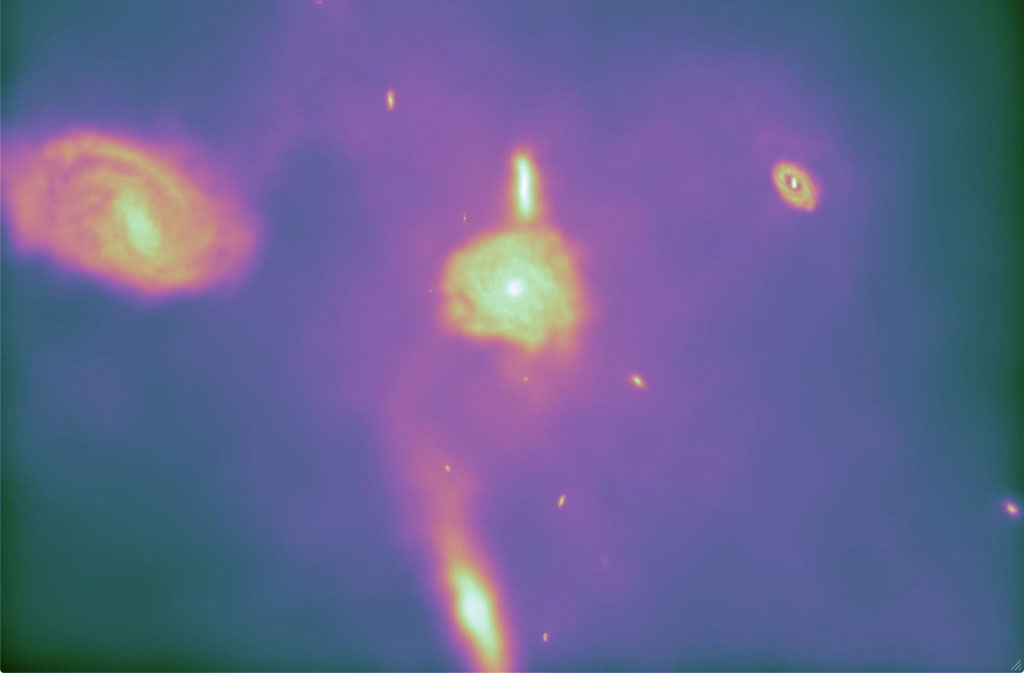Key Takeaways:
“We’ve created the full variety of galaxies we see in the local universe,” said Mark Vogelsberger from CfA.
Our cosmic neighborhood is littered with majestic spiral galaxies like Andromeda, the Pinwheel, and the Whirlpool. Spirals are common, but previous simulations had trouble creating them. Instead, they produced lots of blobby galaxies clumped into balls, without the broad disks and outstretched arms of a typical spiral.
The new software, called Arepo, solves this problem. Created by Volker Springel from HITS, Arepo generates a full-fledged simulation of the universe, taking as input only the observed afterglow of the Big Bang and evolving forward in time for 14 billion years.
“We took all the advantages of previous codes and removed the disadvantages,” explained Springel.
“Our simulations improve over previous ones as much as the Giant Magellan Telescope will improve upon any telescope that exists now,” said Debora Sijacki from CfA.
One of Arepo’s key advantages is the geometry it uses. Previous simulations divided space into a bunch of cubes of fixed size and shape. Arepo uses a grid that flexes and moves in space to match the motions of the underlying gas, stars, dark matter, and dark energy.
The simulations ran on Harvard’s Odyssey high-performance supercomputer, which uses 1,024 processor cores. This fast machine allowed the scientists to compress 14 billion years into only a few months — an endeavor that would have kept a desktop computer busy for hundreds of years!
The team’s future goals include simulating much larger volumes of the universe at unprecedented resolution, thus creating the largest and most realistic model of the universe ever made.










